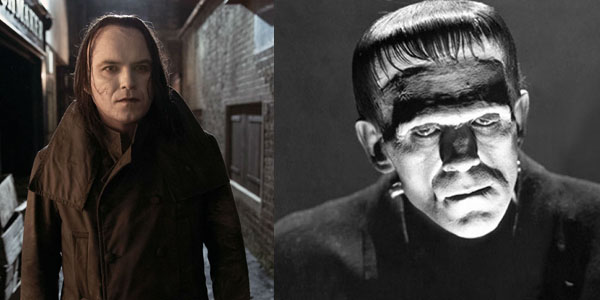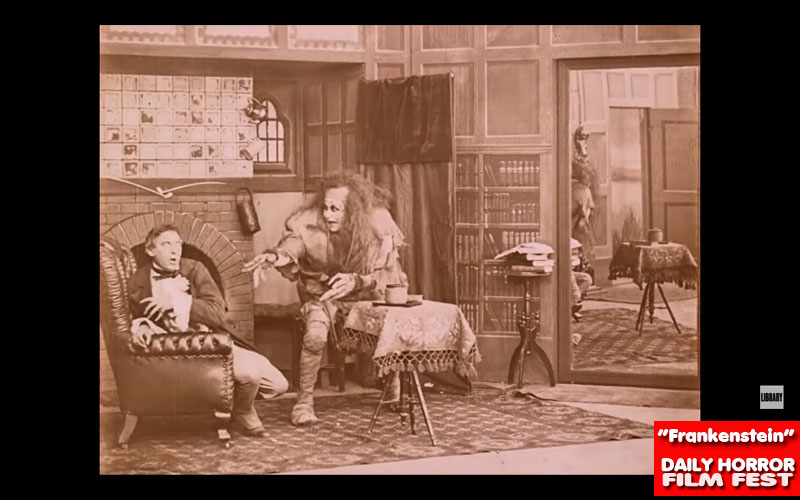Every day through October, the Department of Tangents brings you the Daily Horror Film Fest – one short horror film for every day of the month. It might be terrifying, it might be funny. It could be an homage classic monsters or something entirely new. Check back every morning for a new scare as we celebrate horror shorts!
Every Sunday during the DHFF, I’ll be presenting a classic film short, and it doesn’t get much more classic than the 1910 silent adaptation of Mary Shelley’s Frankenstein, written and directed by J. Searle Dawley, from Thomas Edison’s Edison Studios. It is accepted as the first cinematic representation of Frankenstein, filmed twenty-one years before James Whale defined the character for pop culture with his 1931 feature for Universal Pictures.
There are a lot of different versions of this posted around the Web in various states of restoration and set to different music. This one was restored by the Library of Congress in 2018. Donald Sosin composed the piano music, which feels appropriate to the action, although I don’t believe it follows the cue sheet that was handed out to theaters to guide the live accompanist. Find out more about this restoration on the Library of Congress siteFind out more about this restoration on the Library of Congress siteFind out more about this restoration on the Library of Congress site.
The title card describes this as “a liberal adaption from Mrs. Shelley’s famous story, which is accurate. Clocking in under thirteen minutes, it could only begin to scratch the surface of the novel. In Dawley’s script, we see the doctor head off to college, discover the secret of life two years later, and then creating his famous monster. Frankenstein is afraid of it, and tries to hide it, and the monster leaves when it sees its own reflection in the mirror. On the evening of Frankenstein’s wedding, his creation returns to haunt him.
What impressed me re-watching this were how well the special effects worked. The creation scene is striking, especially with the red filter. Apparently, Dawley filmed a dummy being burned and then reversed the film to make it look like it was coming to life. Watch full screen to get the best effect. There is also some clever staging involving the mirror in Frankenstein’s study. Since the camera is stationary, it helps to reflect action in another part of the room, but it’s also used to comment on the nature of Frankenstein’s ambitions in relation to his monster toward the end.

I am not sure how prominent the filter effect was in the original, but the different filters do have the effect of changing the mood of a scene – sepia for family gatherings, red for danger, blue when the monster is sneaking into the house where Frankenstein has just been wed. Watch this and then compare the monster to Whale’s version. The Edison Studios version might be closer to Shelley’s vision, but when we think of Frankenstein now, it’s the Boris Karloff version we picture. Although modern versions, like the vision of the monster in Showtime’s Penny Dreadful, may be shifting back to Edison.
